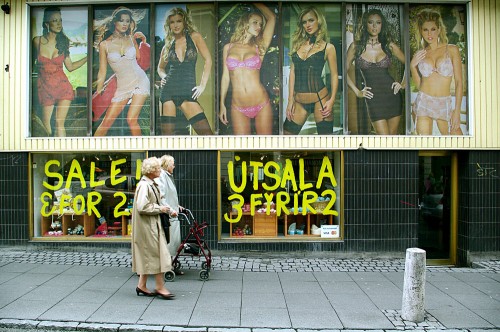 Allegra K. suggested that we take a look at Palin-based pro-conservative message from PalinPAC for this past November’s election. The nearly-two-minute commercial is an excellent example of a gender-specific populism. We recently discussed populism in response to Christine O’Donnell’s “I’m Not a Witch, I’m You” commercial. Populism is, by definition, in opposition to elitism. Political populists believe that the average person is better suited to lead than the exceptional person. In this ad, Palin attempts to personify not just the average person, but the average mom. Allegra writes:
Allegra K. suggested that we take a look at Palin-based pro-conservative message from PalinPAC for this past November’s election. The nearly-two-minute commercial is an excellent example of a gender-specific populism. We recently discussed populism in response to Christine O’Donnell’s “I’m Not a Witch, I’m You” commercial. Populism is, by definition, in opposition to elitism. Political populists believe that the average person is better suited to lead than the exceptional person. In this ad, Palin attempts to personify not just the average person, but the average mom. Allegra writes:
Throughout the video, numerous women are pictured. However, they are a specific type: they are the “real” women; not models, or especially good-looking, dressed up, or even business or political figures. They are “average moms”…
The average woman, according to Palin, is the American hockey mom (just like her), who is (supposedly) middle class, an at-home mom, who cooks and cleans, takes her multiple children to school, and then to after school sports, probably drives a mini van, and uses Clorox on her sons’ jerseys after they get muddy at practice. Palin puts the power of change in their hands because, she says, “moms just kinda know when somethin’s wrong.”
A “just kinda know” kind of knowledge (based on the notion of female intuition) is a great example of Palin’s gendered populist message.
Lisa Wade, PhD is an Associate Professor at Tulane University. She is the author of American Hookup, a book about college sexual culture; a textbook about gender; and a forthcoming introductory text: Terrible Magnificent Sociology. You can follow her on Twitter and Instagram.

 It also fails to be true, as many anti-immigration people claim, that the U.S. accepts a uniquely large number of immigrants who need help once they arrive:
It also fails to be true, as many anti-immigration people claim, that the U.S. accepts a uniquely large number of immigrants who need help once they arrive:







